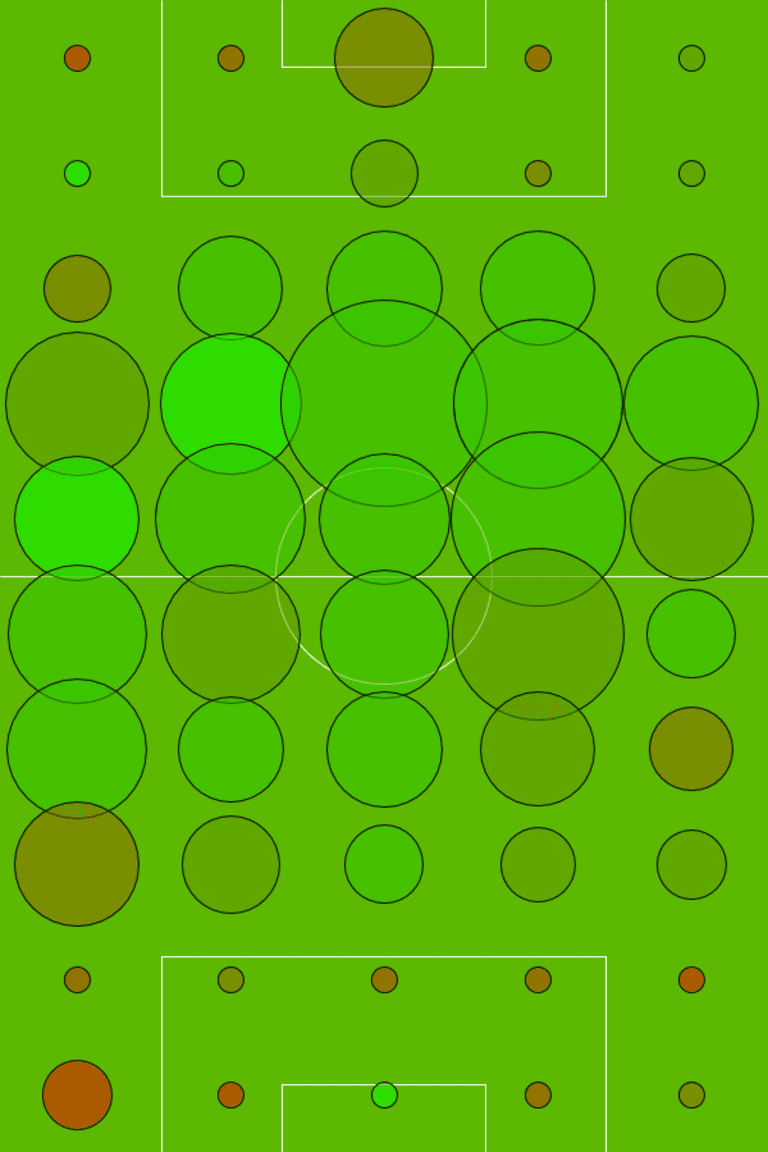Since joining the Seattle Sounders in late July, Christian Tiffert has played 441 minutes across five starts and six total appearances. In these six matches, Seattle are 4-1-1 with a goal differential of plus-10. Like any statistician worth their salt, my first instinct is to try and append the "correlation doesn't imply causation" idiom to the conclusion. While this is true to a certain degree in this case, correlation does – in the words of the great Randall Munroe – "waggle its eyebrows suggestively and gesture furtively while mouthing 'look over there.'" In this article, we're going to have you look over there.
First, let's have a look at a sectional passing visualization of Seattle that is populated with game data prior to the German's arrival. For this visualization, the field is broken into 50 sections, each represented by a colored circle. The circle's volume is representative of the number of passes that have been attempted in that region: more passes, larger volume. The color the circle represents the percentage of which the passes in that region were completed. A green gradient represents a high pass completion rate and a red hue represents a low pass completion rate.

Next, this is same Seattle team, but only in matches where Tiffert has participated. This difference is significant. Notice the overall increase in pass volume – that's usually a byproduct of an effective tactical system. Also, look at the change in pass completion rate at the top of the attacking third. An increased pass completion rate in the final third surely has a positive effect on attacking efficiency.

While this success surely can't be pinned solely on Tiffert's shoulders – Seattle wasn't exactly struggling in an attacking sense before his arrival – we can take a look at how he has fit into Seattle's system. Here is every one of Tiffert's attempted passes this season, color coded by the relative difficulty of the pass. The greener the pass, the easier it is.

His role is fascinating, and tough to define by eyeballing it – but he is very efficient. Comparing his primary and secondary pass completion rates in comparison to what is expected from the average MLS player, he is over-performing by a non-trivial margin. In fact, his average completed passes are three to four percentage points more difficult than the average MLS player, but his completion rate doesn't drop off one bit.
Based on Tiffert's passing chart, it's clear he's not necessarily relied on to make the final pass or pull the strings in the attacking third. What he does do, however, is make it possible – through nifty work in the midfield – for his teammates to be more effective in forward positions, an attribute certainly worthy of the Designated Player tag attached to his name.













